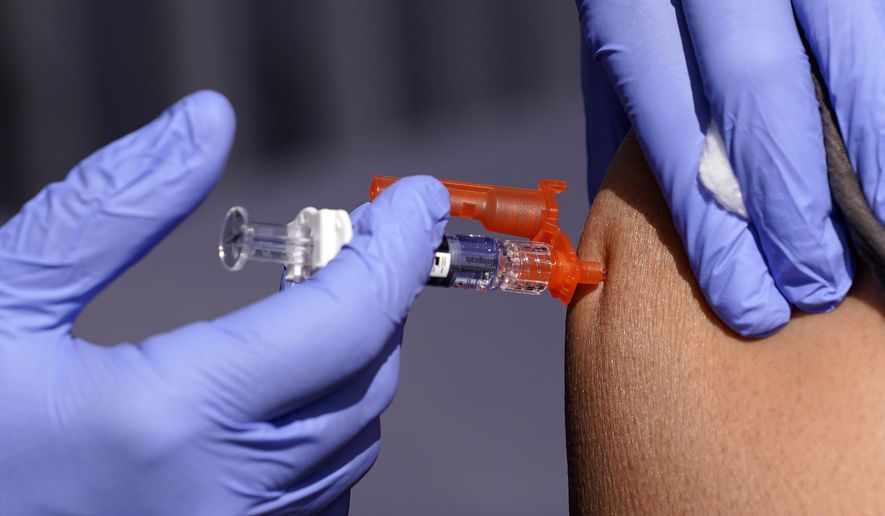Hospitals are seeing a post-Thanksgiving spike in COVID-19 patients as facilities cope with a higher-than-usual number of patients with flu and a respiratory illness known as RSV.
The number of people hospitalized for COVID-19 on a given day is averaging about 35,000, a nearly 30% increase from two weeks ago.
The White House has expressed confidence that it has enough tools to weather another winter surge of the virus, and the level of hospitalization is far below the nearly 60,000 hospitalizations around this time last year.
Yet, facilities are straining from an early and severe flu season, with 20,000 patients admitted the week ending Nov. 26, and an influx of persons with the respiratory syncytial virus (RSV), which can be severe in infants.
Typically, the rate of respiratory infections rises during the winter months because of how the viruses behave in the colder weather and people gather closely indoors. Holiday gatherings will likely exacerbate the trend.
“This year’s flu season is off to a rough start,” said Dr. Sandra Fryhofer, board chair of the American Medical Association and an associate professor of medicine at Emory University School of Medicine. “It’s a perfect storm for a terrible holiday season.”
Officials hope the wall of immunity built up by vaccines and prior infections will prevent another massive COVID-19 crisis. The previous two years saw big spikes in hospitalizations and deaths around Christmas and into late January.
The administration is urging Americans to get an updated, or “bivalent,” booster, though only about 13% of the eligible population has come forward, according to federal data.
Rochelle Walensky, director of the Centers for Disease Control and Prevention, said the flu vaccine appears to be a good match for circulating strains. But she said she is disappointed by the rate of uptake among seniors and other vulnerable people who should be getting the shots.
“First and foremost, get vaccinated,” Dr. Walensky said.
Dr. Walensky said the CDC continues to recommend masks on public transportation, though face coverings haven’t been required by a federal mandate since the spring.
Any additional burden from COVID-19 will be concerning for hospitals battling a sudden uptick in flu and RSV cases. Scientists believe the two viruses are packing a bigger punch this year because many Americans did not get exposed to the pathogens in the past two cycles because they hunkered down in the COVID-19 pandemic.
The CDC said the flu season is off to its worst start in about a decade. The agency has recorded 8.7 million illnesses, 78,000 hospitalizations and 4,500 deaths since Oct. 1.
“We’ve forgotten how bad flu can be,” Dr. Fryhofer said. “This year’s season is a shout-out that it can be really bad and it’s here.”
Health and Human Services Secretary Xavier Becerra says the Biden administration “stands ready to continue assisting you with resources, supplies, and personnel.”
In a letter obtained by CNN, Mr. Becerra said hospitals can tap into $400 million the Centers for Disease Control and Prevention set aside for yearly public health threats and obtain waivers that let them transfer patients or increase surge capacity.
“As your federal partner, we stand ready to evaluate any request for federal medical assistance and support — including requests for medical personnel and equipment — working in close coordination with you and local jurisdictions to determine the needs and availability of matching resources,” Mr. Becerra wrote.
For more information, visit The Washington Times COVID-19 resource page.
• Tom Howell Jr. can be reached at thowell@washingtontimes.com.




Please read our comment policy before commenting.